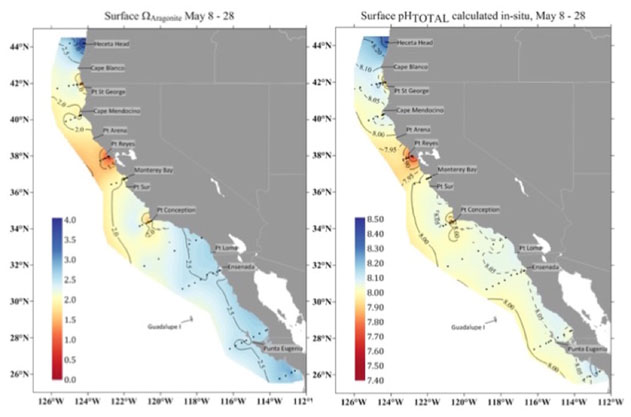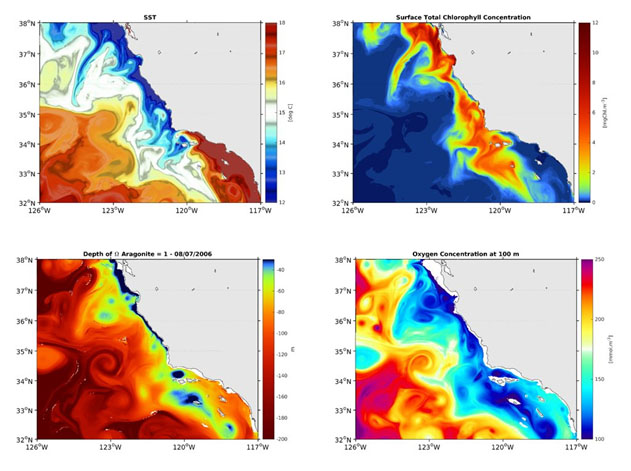We are supporting research that will identify areas of the California Current that are susceptible to ocean acidification and low oxygen and how that susceptibility will change in future ocean conditions. Research findings will inform regional water quality and resource management.
Why We Care
The California Current System is one of the most biologically productive regions of the world ocean. Seasonal upwelling of deep, nutrient-rich water maintains high rates of biological productivity, but also brings low-oxygen and relatively acidic waters onto the shelf and up to the surface. These conditions of ocean hypoxia and acidification (OHA) can restrict the habitat of key species and affect the ecosystem through food web interactions. A suite of factors combine to influence OHA, including large-scale climate change and human inputs of nutrients from coastal sources. The relative importance of these drivers has not been evaluated, yet is critical to any strategy to manage coastal water quality and marine resources.
What We Are Doing
We are supporting a research team at the University of California Los Angeles, the University of Washington, the Southern California Coastal Water Resources Project, and the NOAA Pacific Marine Environmental Laboratory who will:
- Develop a mathematical model of ocean acidification and hypoxia in the California Current System (Baja, California to British Columbia) with higher resolution in the Southern California Bight, the California central coast and the Oregon coast,
- Use the model to understand the relative contributions of natural climate variability and human inputs on the status and trends of hypoxia and acidification in the California Current System, and
- Transmit these findings to coastal zone managers, and help them explore the implications for marine resource management and pollution control.
Benefits of Our Work
From model results, we can determine what marine habitats are most susceptible to OHA and how susceptibility will change over time. We can also evaluate how land-based sources of nutrients exacerbate the problem. The project goals align with those of the West Coast Governor’s Alliance and the California Ocean Protection Council, each of which participate in the West Coast Ocean Acidification and Hypoxia Science Panel.


